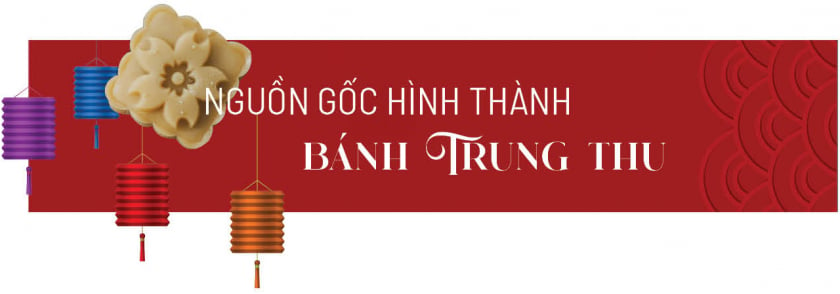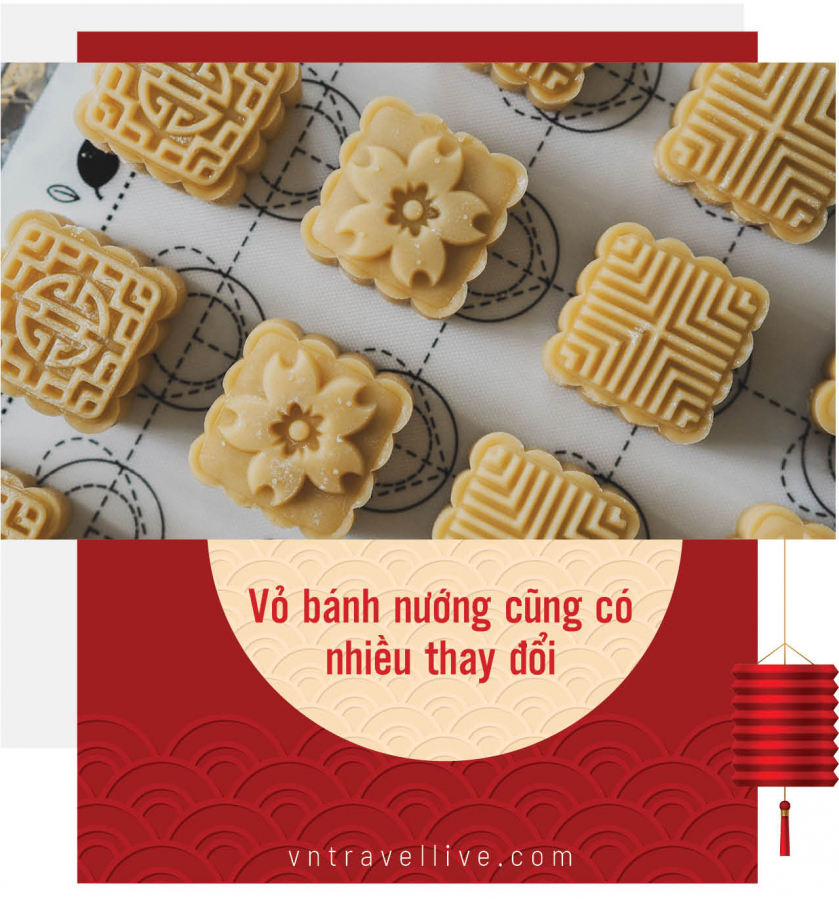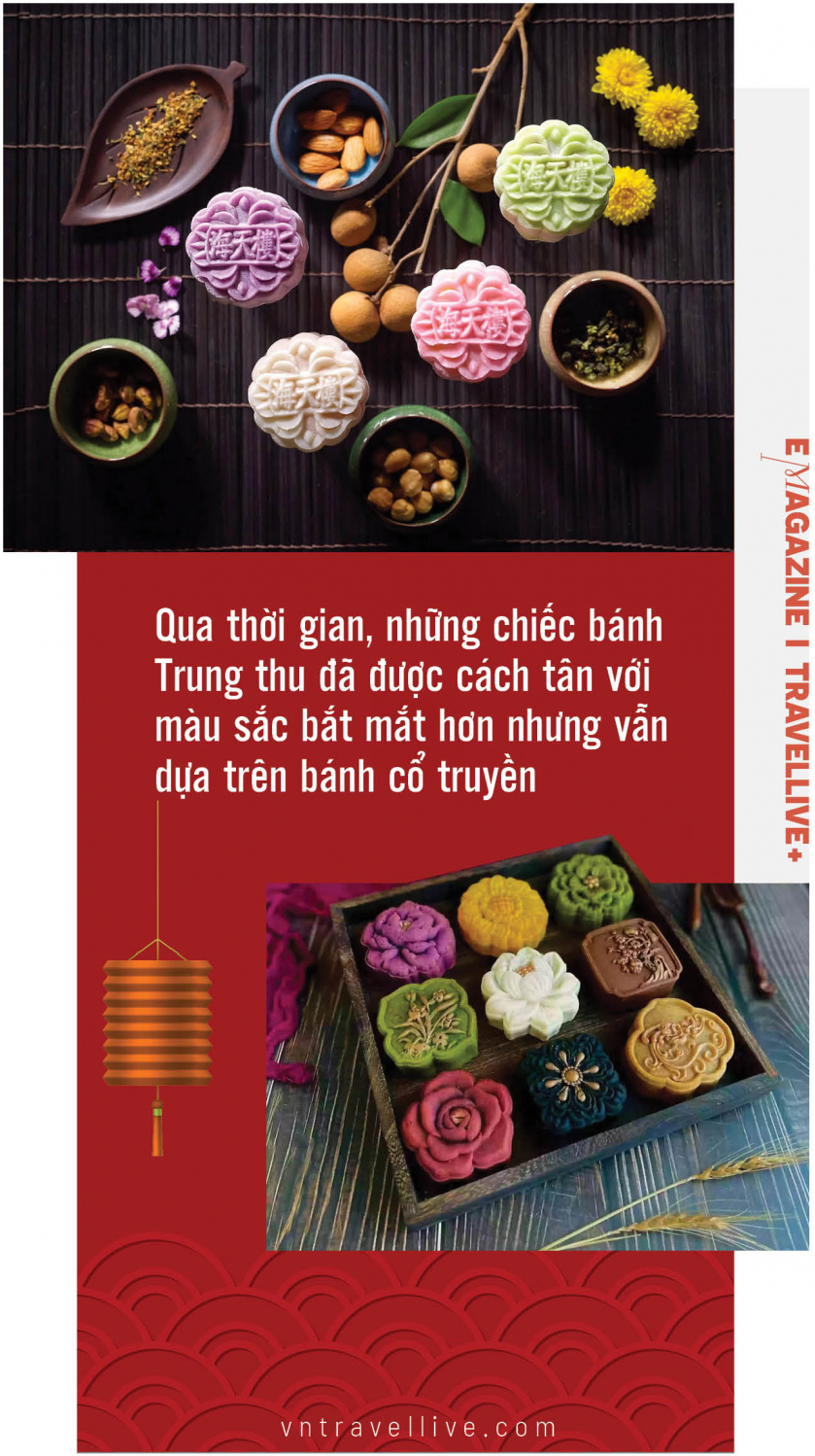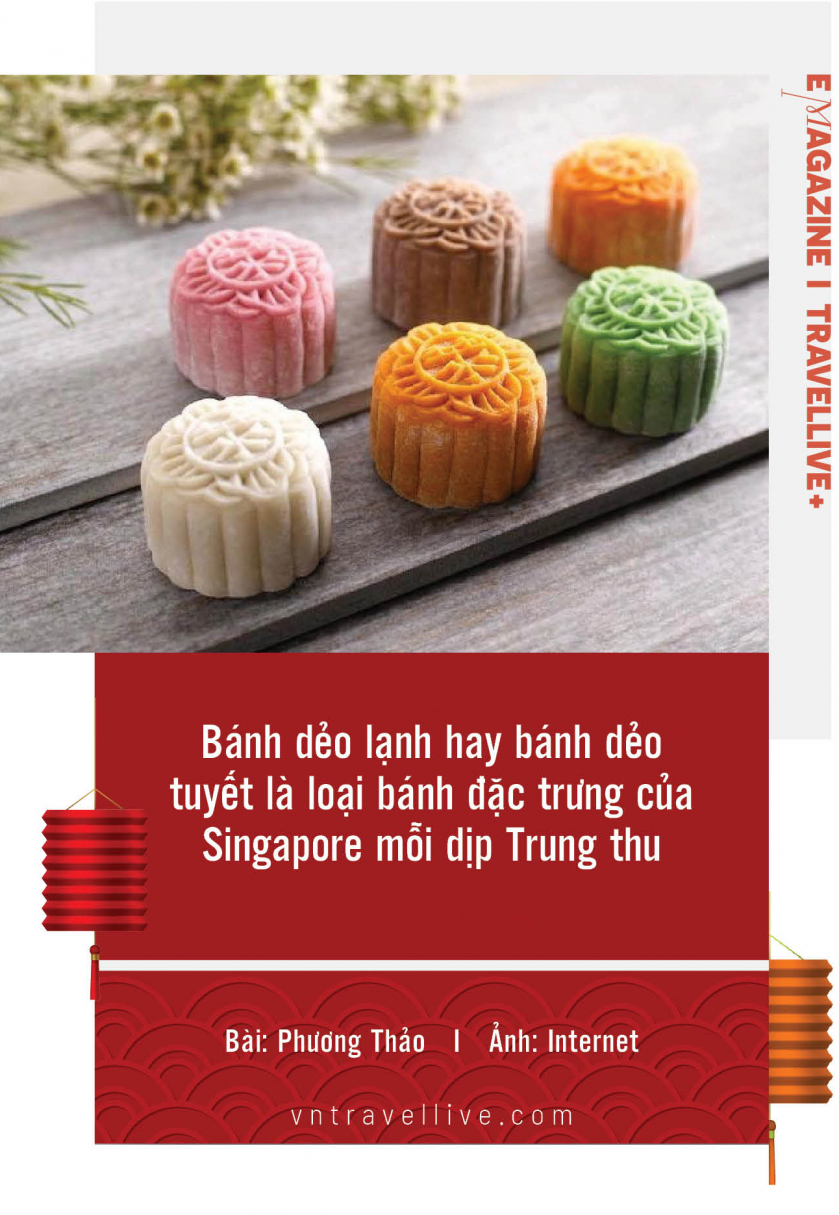Every year, in the 8th lunar month, Vietnam and other countries around the world prepare to welcome the Mid-Autumn Festival. This is not only an occasion that brings excitement to children with full fruit trays or colorful lanterns and masks, but the Mid-Autumn Festival is also an occasion for family reunion. During these days, the indispensable spiritual spice is moon cakes - a familiar gift of East Asians.


For Vietnamese people, the Mid-Autumn Festival is the third biggest festival of the year (after Tet Nguyen Dan, Han Thuc Festival and Doan Ngo Festival). According to custom, each Tet has its own special cakes associated with the story and origin of that day. When talking about the Mid-Autumn Festival, it is impossible not to mention moon cakes and sticky rice cakes. Watching the full moon in August without enjoying a piece of moon cake and sticky rice cake with a cup of tea is truly a mistake.
With its sweet taste and distinctive shape, moon cakes have long represented reunion and family reunion. However, not everyone understands the origin and meaning of moon cakes.
Mooncake is the name of a type of cake originating from China used to eat during the Mid-Autumn Festival. Over time, mooncakes in different countries and regions have had different shapes and flavors. These cakes appeared in Vietnam due to the cultural influence when China occupied our country for a long time. And these cakes still appear today and have become a typical cake for full moon days.
The history of the formation of moon cakes has many interesting things, especially about the name. The name moon cake is commonly used in Vietnam because this is a type of cake that only appears a lot during the Mid-Autumn Festival, so it is called Moon cake. In China, people call this Nguyet Binh cake and in English it is called moon cake, meaning the moon cake, the symbol of the Mid-Autumn Festival.
Taking the moon as a symbol, moon cakes are divided into two main types: sticky rice cakes and baked cakes. But when mentioning moon cakes, people immediately think of baked cakes because they are more diverse. Baked cakes are round in shape, mainly divided into two main types of fillings: sweet and salty. Sweet cakes include cakes with coconut filling, green bean filling, sesame filling... and salty cakes are mixed fillings.
In addition to the round shape, the cake is also shaped in many different shapes but still retains the basic ingredients, so the taste of the cake will not be different. Depending on the type of filling, the cake brings different flavors, people often joke that eating moon cake proves that the Mid-Autumn Festival has come.

Nowadays, the shape and filling of the cake can be varied, not following the traditional patterns. However, the moon cake still has the meaning of being a cake representing reunion, family love and is an indispensable cake in every Mid-Autumn Festival of Vietnamese people. And the moon cake boxes are also used by Vietnamese people as a gift of gratitude to relatives, friends or partners, customers.
The Mid-Autumn Festival is also an occasion for families to gather, hold small parties to watch the moon, and enjoy tea. Moon cakes represent the moon with its full, bright beauty. A pair of moon cakes and sticky rice cakes symbolize the two sides of yin and yang, in which the sticky rice cake symbolizes the bright, round, pure moon.
Many countries in Asia share the Mid-Autumn Festival because they use the same lunar calendar and Vietnam is no exception. However, traditionally, Vietnamese mooncakes and mooncakes have their own unique characteristics.
While traditional Chinese cakes use glutinous rice flour with red bean paste and salted egg or char siu filling, traditional Vietnamese cakes are a mixture of: lard, sugar, melon seeds, lemon leaves, Chinese sausage or dried chicken, pumpkin jam, lotus jam, roasted sesame… mixed with Mai Que Lo wine and malt. These ingredients and the round shape of the cake symbolize the wish for a favorable harvest, a bountiful harvest and family reunion.
The traditional way of making moon cakes is also very elaborate. The ingredients must be prepared a long time in advance, even several months. Specifically, brown sugar is cooked with pineapple or lemon, malt, lye water (water cooked from the ash of straw and stubble after the harvest), cooked, then covered and simmered for two or three months to get a beautiful color before making the cake. This sugar water is mixed with the dough of the cake crust so that when baked, the cake has a beautiful brown color and is soft after baking for a day.

The mooncake crust is made from roasted and finely ground flour, also mixed with sugar water, a little cooking oil and grapefruit flower water for fragrance. The sugar water here is different from the sugar water for mooncakes, in that the sugar is simply dissolved in hot water, without having to be cooked elaborately or left for a long time.
The difference of traditional Vietnamese moon cakes is the faint but extremely clear, pure and seductive fragrance of grapefruit flower water. Grapefruit flowers in March are picked, steamed, the vapor condenses on the pot lid and is collected as grapefruit flower water, used in making cakes and cooking sweet soups, a special flavoring of Vietnamese people.


Through the ups and downs of history, besides the traditional flavors of moon cakes, there are now countless types of cakes created based on traditional cakes. Not only is it a delicious dish for the Mid-Autumn Festival. Today's moon cakes are also an art dish. Along with the development of society, modern moon cake models appear with many unique shapes and colors that are extremely eye-catching.
There are modern mooncakes with fillings such as: green bean cake, red bean and salted egg, bamboo charcoal, roasted chicken, bird's nest, tiramisu, chocolate, green tea, taro, green rice, coconut milk, black sesame, coffee... Watermelon seeds can also be replaced with macadamia nuts, cashews, walnuts, almonds...
The crust of the baked cake also has many changes. Depending on the taste, the baker can be creative by mixing in different ingredients. The crust is not only in the traditional mold anymore, but there are cakes decorated with flowers, embossed shapes with different colors, satisfying the creativity of the baker. There are also creative crusts made from thousand-layer pastry, with colors interwoven in each layer, extremely eye-catching.
As for moon cakes, in addition to traditional moon cakes, there are now also rich fillings such as baked cakes. In addition, many types of moon cakes from Singapore, Taiwan, and Japan have also been imported, creating extremely rich cake seasons, such as cold snow moon cakes, jelly moon cakes with soft fillings, mochi cakes...
Mooncakes originated in China and have been introduced to many other Asian countries. From Korea, Japan, Thailand, Malaysia, Vietnam… each country adds its own cultural identity to the mooncakes.
It can be said that modern moon cakes are really diverse in shape, color, flavor and preparation method. However, it cannot be denied that traditional moon cakes are still the most chosen and popular type of cake.
Whether it is a modern or traditional moon cake, in the end it is still a spiritual spice for the family to gather together on the full moon day of the Mid-Autumn Festival.


Not only Vietnam, many countries in Asia also have special cakes to enjoy during the Mid-Autumn Festival. Due to the influence of China, moon cakes are enjoyed and this holiday is also celebrated in other parts of Asia.
In Japan, there are two moon-viewing festivals every year. One of them is Zyuyoga, associated with the traditional custom of "Otsukimi" (meaning moon-viewing on the full moon day in mid-autumn). For the people of the land of the rising sun, this is a festival to honor the moon in autumn, the time when the moon is at its fullest. During the Otsukimi festival, Japanese people often make Dango, a type of dumpling made from rice flour (mochiko) - quite similar to mochi and used when enjoying tea.
In Korea, the Mid-Autumn Festival is called Chuseok (Thanksgiving), the day when people who have been away from home return to their hometowns to reunite. Usually, the whole family will cook together and enjoy traditional dishes such as songpyeon (crescent-shaped rice cakes). On the Mid-Autumn Festival, Koreans will shape the cakes into a crescent moon, because of the concept of "the crescent moon will become full" - a symbol of happiness and fertility.
In Thailand, moon cakes are quite diverse. However, the most popular type of cake among the people of the Golden Temple is the baked cake with durian filling and 1-2 salted egg yolks. The egg yolk represents the round moon face. The outside is covered with a layer of dough shaped to resemble a peach. Thai people believe that by doing so, the Eight Immortals will help bring the peach to the moon to wish Quan Am a long life, and the gods will bless everyone.
In Singapore, the Mid-Autumn Festival has many similarities with Vietnam. Therefore, the flavor of this country's mooncakes is also very suitable for Vietnamese taste. The most prominent is "cold mooncakes". This cake has a mooncake crust and a chocolate filling with cool fruit jelly. The finished cake is kept in the refrigerator. When enjoyed, it will bring a pleasant sweet feeling. Suitable to use with green tea.
Mooncakes in the Philippines are called Hopia. They are simple in appearance, the highlight is the filling. The baked cakes have a thin and crispy crust, breaking it will reveal a filling filled with many flavors. Common Hopia fillings are mung beans, taro, red beans, purple sweet potatoes, durian or pork.
In Korea, the Mid-Autumn Festival is called “Thu tich tiet” (Autumn Night Festival). When the sky begins to darken, it is also the time for Koreans to watch the moon together. The traditional cake of Koreans on this occasion is a sponge cake (muffin). A sponge cake shaped like a crescent moon - half a moon. The cake is made from rice flour, filled with beans, jam, apples... Koreans often give each other this type of cake during the Mid-Autumn Festival.















